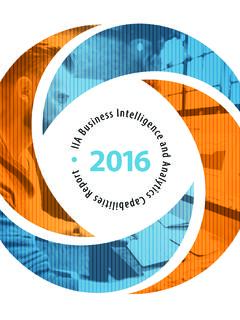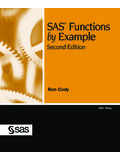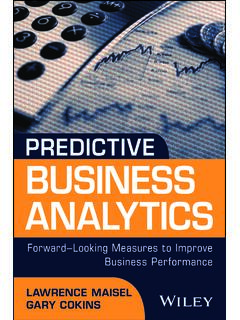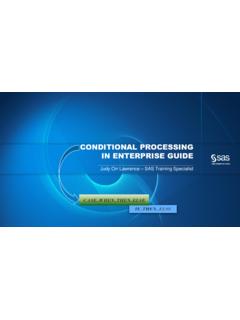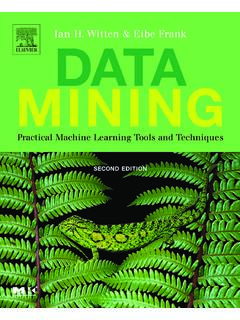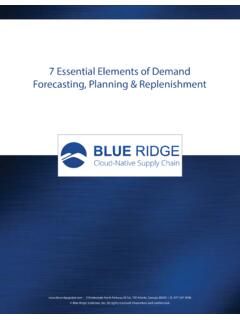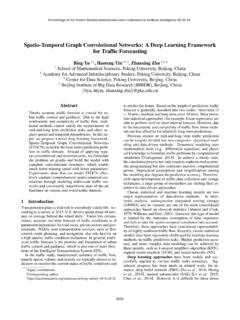Transcription of Data Visualization Techniques Title - SAS
1 TitleWHITE PAPERData Visualization Techniques From Basics to Big data With SAS Visual AnalyticsiiContentsIntroduction ..1 What Is data Cardinality? ..2 Tips to Get Started ..2 The Basics: Charting 101 ..2 Line Charts ..2 Bar Charts ..3 Scatter Plots ..4 Bubble Plots: A Scatter Plot Variation ..5 Pie and Donut Charts ..6 Visualizing Big data ..7 Handling Large data Volumes ..7 Visualizing Semistructured and Unstructured data Using Word Clouds and Network Diagrams ..9 Visualization With Correlation Matrices ..10 Filtering Big data ..12 data Visualization Made Easy With Autocharting ..12 See Into the Future With Automated Forecasting Techniques ..13 Understanding Influence With Decision Trees ..15 Use Location Analytics to Augment Geo Maps ..16 Improve Employee Collaboration With Visualization on Mobile Devices ..17 Conclusion ..18 Learn More About SAS Visual Analytics ..18 Introduction A picture is worth a thousand words especially when you are trying to understand and discover insights from data .
2 Visuals are especially helpful when you re trying to find rela-tionships among hundreds or thousands of variables to determine their relative impor-tance or if they are important at generate and collect data each minute. Everyone from executives and departmental decision makers to analysts, call center workers and production line employees hopes to learn things from those diverse sets of data that can help them make better decisions, take smarter actions and operate more efficiently. Regardless of how much data you have, one of the best ways to discern important rela-tionships is through advanced analysis and easy-to-understand visualizations. You don t want to miss a significant correlation or draw an incorrect conclusion that could adversely affect your decision making. When sophisticated analyses can be performed quickly, even immediately, the results can be presented in ways that are easy to consume while allowing queries and exploration.
3 Therefore, people across all levels in your organization can dive deeper into data and use the insights for faster, more effec-tive decisions. To create meaningful visuals of your data , there are some basics you should consider. data size, data type and column composition play an important role when selecting graphs to represent your data . This paper discusses some basic issues of data visualiza-tion and provides suggestions for addressing them. In addition, big data brings a unique set of challenges. This paper covers some of those, as well as potential solutions. If you are working with massive amounts of data , one challenge is how to display output in a way that s not overwhelming. You may need to collapse and condense the data but still provide graphs and charts that decision makers are accustomed to seeing. And, in today s on-the-go society, visualizations must be delivered quickly to mobile devices while giving people the ability to easily explore data on their own in real time.
4 SAS Visual Analytics enables a broad range of business users to prepare, visually explore and find valuable insights in data without coding or the need for data science skills. Intelligent autocharting creates the best possible visual based on the data that is selected. These data visualizations highlight relevant findings (such as clusters, excep-tions, correlations or links in data ) without requiring users to build or write algorithms. Smart visualizations also provide citizen data scientists and analysts with fast proto-typing, and reduce the amount of time spent on manual, labor-intensive of the easiest ways to discern important relation-ships in data is through advanced analysis and easy-to-understand paper discusses some basic issues of data Visualization and provides suggestions for addressing heart of SAS Visual Analytics is an in-memory, distributed processing engine that accelerates analytical computations. The combination of powerful analytics and an easy-to-use data exploration interface enables different types of users to create and interact with graphs so they can get the most value from their data faster than ever.
5 This creates an unprecedented ability to identify the best opportunities, understand risks, improve business performance, promote collaboration and support better to Get Started It s a good idea to begin with a data Visualization pilot program. Start small. Think about a short list of business problems you want to solve, or identify a few new opportunities ( , segments) to investigate, or even use it to challenge your current interpretations. Here are a few basic concepts that can help you generate the best visuals for displaying your data : Understand the data you are trying to visualize, including its size and cardinality, and consider (honestly) the data preparation effort that will be required. Determine what you are trying to visualize and what kind of information you want to communicate. Know your audience and understand how it processes visual information. Use a visual that conveys the information in the best and simplest form for your audience.
6 The Basics: Charting 101 Here is a quick guide to help you decide which chart type (or graph) to use for your data . Line Charts Line charts show the relationship of one variable to another. They are most often used to track changes or trends over time. Line charts are also useful when comparing multiple items over the same time period. The stacking lines are used to compare the trend or individual values for several variables (see Figure 1).You may want to use line charts when the change in a variable or variables clearly needs to be displayed and/or when trending or rate-of-change information is of value. It is also important to note that you shouldn t pick a line chart merely because you have data points. Rather, the number of data points that you are working with may dictate the best visual to use. For example, if you only have 10 data points to display, the easiest way to understand those 10 points might be to simply list them in a particular order using a table.
7 When deciding to use a line chart, you should consider whether the relationship between data points needs to be conveyed. If it does, and the values on the X axis are continuous, a simple line chart may be what you Is data Cardinality? Cardinality is the unique-ness of data values contained in a column. High cardinality means there is a large percentage of unique values ( , bank account numbers, because each item should be unique). Low cardinality means a column of data contains a large percentage of repeat values (such as a gender column). 3 Figure 1: Line charts show the relationship of one variable to another and are often used to track trends over time. Bar Charts Bar charts are most commonly used for comparing the quantities of different categories or groups. Values of a category are represented using the bars, and they can be config-ured with either vertical or horizontal bars, with the length or height of each bar repre-senting the value.
8 When values are distinct enough that differences in the bars can be detected by the human eye, you can use a simple bar chart. However, when the values (bars) are very close together or there are large numbers of values (bars) that need to be displayed, it becomes more difficult to compare the bars to each other. To help provide visual variance, bars can have different colors. The colors can be used to indicate such things as a particular status or range. Coloring the bars works best when most bars are in a different range or status. When all bars are in the same range or status, the color becomes irrelevant, and it is most visually helpful to keep the color consistent or have no coloring at all. Another form of a bar chart is called the progressive bar chart, or waterfall chart. A waterfall chart shows how the initial value of a measure increases or decreases during a series of operations or transactions (see Figure 2). The first bar begins at the initial value, and each subsequent bar begins where the previous bar ends.
9 The length and direc-tion of a bar indicates the magnitude and type (positive or negative, for example) of the operation or transaction. The resulting chart is a stepped cascade that shows how the transactions or operations lead to the final value of the charts can be config-ured with either vertical or horizontal bars, with the length or height of each bar representing the value. 4 Figure 2: One type of bar chart is called a waterfall chart. This one shows how the initial value of a measure increases or decreases during a series of operations or transactions. Scatter Plots A scatter plot (or X-Y plot) is a two-dimensional plot that shows the joint variation of two data items. In a scatter plot, each marker (symbols such as dots, squares and plus signs) represents an observation. The marker position indicates the value for each observa-tion. Scatter plots also support grouping. When you assign more than two measures, a scatter plot matrix is produced.
10 A scatter plot matrix is a series of scatter plots that displays every possible pairing of the measures that are assigned to the Visualization . Scatter plots are useful for examining the relationship, or correlations, between X and Y variables. Variables are said to be correlated if they have a dependency on, or are somehow influenced by, each other. For example, profit is often related to revenue. The relationship that exists might be that as revenue increases, profit also increases (a positive correlation). A scatter plot is a good way to visualize these relationships in data . In a scatter plot, you can also apply statistical analysis with correlation and regression. Correlation identifies the degree of statistical correlation between the variables in the plot. Regression plots a model of the relationship between the variables in the plot. Once you have plotted all of the data points using a scatter plot, you are able to visually determine whether data points are related.
